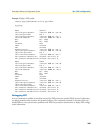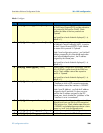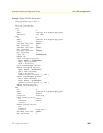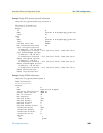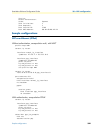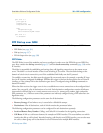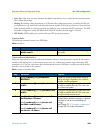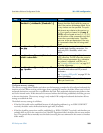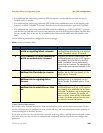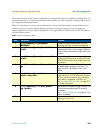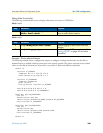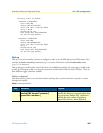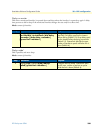
PPP Dial-up over ISDN 333
SmartWare Software Configuration Guide 30 • PPP configuration
Configure recovery strategy
The recovery strategy defines whether and when new dial-attempts are made after all configured outbound des-
tinations are tried. When receiving a dial-trigger from a spoofing IP interface, the dialer iterates over its list of
outbound destinations once and tries to establish the first link. Each outbound destination may define a time-
out list for internal retries. If this timeout list is executed without the link being established, the dialer goes over
to the next destination. The recovery strategy is only needed if all configured outbound destinations did not
manage to establish the link.
The default recovery strategy is as follows:
• If the first link could not be established because of call-signaling problems (e.g. no ISDN CONNECT
received), the dialer retries the first destination again after 30 seconds.
• If the first signalling connection could be established (e.g. ISDN CONNECT received), and therefore you
probably have to pay for the connection, but if the PPP negotiation failed, the dialer does not start another
retry. The operator has to manually reset the dialer (executing the reset command in the context cs/interface
dialer mode).
5 [name] (outbound)[provider]#[no] retry
<timeout1> [<timeout2> [timeout3>...]]
Specifies how many times and after which
timeouts the dialer shall redial the same pro-
vider if the previous dial-attempt failed. Up to
8 retry timeouts can be specified. The speci-
fied timeouts are relative to the previous try.
So, if you specify a timeout list of retry 5
10 10, calls are made at time 0, 5, 15, 25.
Use the no-form of the command to only dial
once to the current destination. The dialer
goes over to the next destination if the retry-
list is executed without the link being estab-
lished.
6 [name] (outbound)[provider]#encapsula-
tion ppp
Defines the data protocol that shall run over
the established signalling connection. Cur-
rently only PPP is available, which is the
default.
7 [name] (outbound)[provider]#bind sub-
scriber <subscriber>
Indirectly binds to a spoofing IP interface over
a PPP subscriber. The PPP subscriber contains
all PPP protocol parameters (e.g. authentica-
tion protocol, credentials, multi-link, etc.)
See “Creating a PPP subscriber” on page 317
for further information.
8 [name] (outbound)[provider]#use profile
ppp <profile>
Defines the PPP profile that shall be used. The
PPP profile stores advanced PPP protocol
parameters.
See “Creating a PPP profile” on page 321 for
further information.
9 Repeat Steps 1-8 for all required backup pro-
viders you want to use.
Step Command Purpose



